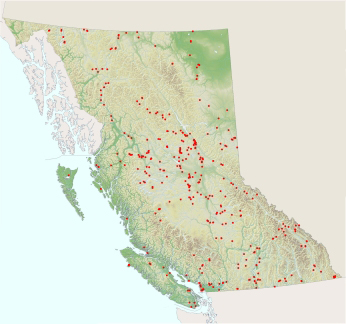Small black dragonflies with white faces. The thorax and abdomen are usually marked, males with red and females with yellow (or sometimes red); some pruinescence develops with age. The hindwings have a distinctive small, triangular dark patch at the base and the legs are black. Five of the six species in our region are northern in distribution and most prevalent in the mountains or in the north around the marshy shores of lakes in the late spring or early summer. The Dot-tailed Whiteface is different, preferring cattail marshes and ponds in warm valley bottoms. Whitefaces perch on the ground, logs, lily pads or low vegetation. Males usually hover nearby while females lay eggs. Species can be tricky to separate; look for size, the colour pattern on the abdomen, and the details of the female’s vulvar lamina and the male’s hamules.
|
|
